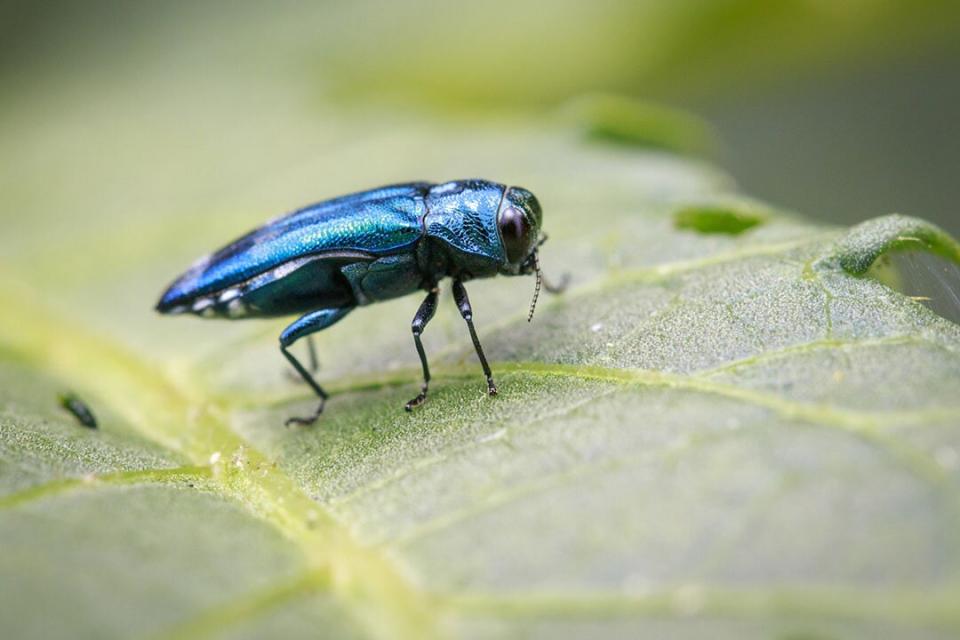This Is What Actually Happens to Ash Borers in the Extreme Cold
This past week the harsh temperatures brought by the polar vortex had several states in the Midwest colder than some parts of Antarctica. The cold caused train tracks to break, schools to close, and canceled flights. With all the danger and mayhem, there seemed to be a light in the cold, cold dark: The cold from the polar vortex had to kill off nasty bugs, particularly invasive species not used to the weather—right? Wrong.

Image of Emerald Ash Borer Beetle on a green leaf. Insect. Animal Image courtesy of Getty Images
Erin Hodgson, an associate professor in the Department of Entomology at Iowa State University, released a simple explanation for how insects survive the winter. Insects have to make their own heat, and as long as the temperatures aren’t below what freezes their internal body fluids, they'll survive.
It turns out that insects that spend the winter in the Midwest have ways to protect themselves from even the coldest cold weather, says Mark Shour, an emerald ash borer specialist for Iowa State University’s extension services. Mark frequently advises on insects and forest health.
"The first line of defense is actually the snow cold weather brings," Mark says. "If the insects can get below the snow, they’re naturally insulated and protected against the coldest temperatures—and the winds that bring them."
Some insects have even created special ways to tolerate freezing. Mark says that some insects, like the woolly bear caterpillar, can have ice form on their body as a kind of frozen protectant for hibernation. Others make a natural “antifreeze” from the sugars in their body.
Related: Eliminate Grubs in Your Lawn
But what about ash borer? The invasive species is destroying trees across 30 states—the polar vortex must be what does it in, right?
Wrong again. "The emerald ash borer actually spends the winter in the larval or pre-pupal stages, usually under the bark of a tree, which is also insulating," Mark says. In parts of upper Minnesota, die-off is more likely, but no one knows for sure what will happen.
A study from the Forest Service in Minnesota found that about 98% of insects are predicted to die at -30 degrees Fahrenheit, but Mark cautions that insulation—like snow and tree bark—can change whether the insects feel the full brunt of that cold or not. The study also cautions that trees can warm up during sunny days despite the air temperature, further protecting the larvae.
